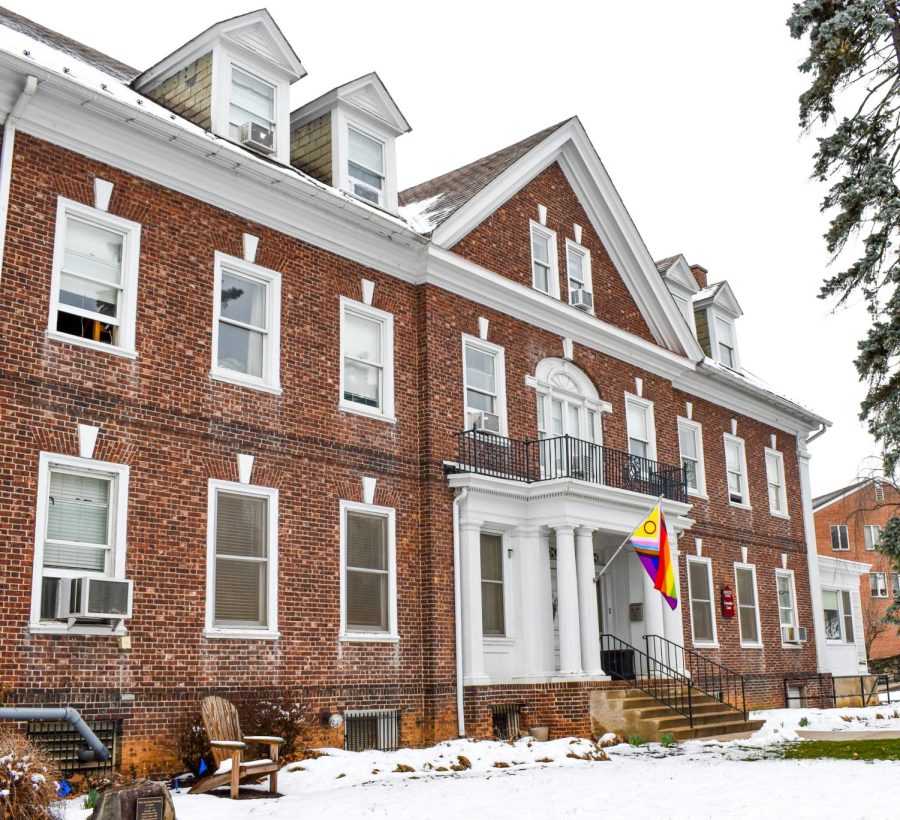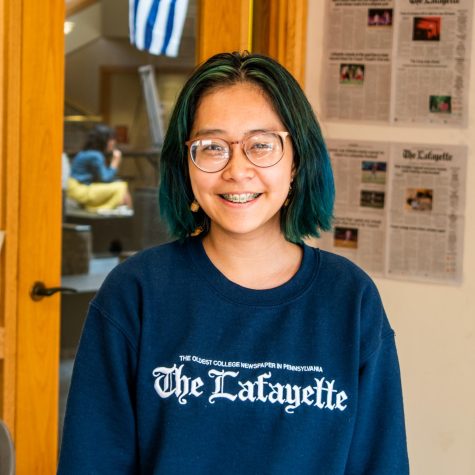Lavender Lane was founded last year as special interest housing meant to provide a safe and inclusive living space for LGBTQIA+ students. Although many queer students have found refuge in the house, some of Lavender Lane’s non-white residents have expressed frustration with the way that the house handles issues of race.
Image Patterson ‘25, a resident of the house, said they have experienced racialized microaggressions concerning the way they wash their hair that non-Black residents do not receive.
“As a Black queer person living in this house, you all have an issue with me washing my hair in the sink,” Patterson said. “However, there’s a bunch of people who dye their hair, and everyone’s like, ‘Yeah, go dye your hair.’ [I] just need to shampoo and condition my hair, and you barely even notice that it’s there — [yet] it became an issue.”
Lavender Lane resident Samantha Peabody ‘25 said that alleged racial microaggressions expose a blind spot in the house’s treatment of its non-white members.
“This is supposed to be a safe space for all of us, not just a safe space for white queer people,” Peabody said. “So to hear microaggressions like that, it’s ridiculous.”
Like Patterson, Peabody has experienced criticism for doing the same or similar things as white residents.
“I always feel cornered in a way, so it’s hard to feel truly, truly accepted and safe in a space like that,” Peabody said. “Especially with us. We’re already a double minority: we’re gay, and we’re [people of color]. So it’s difficult.”
Lavender Lane resident Liu ‘25 said that there are times when they feel isolated in the community because of their racial identity.
“I think one of the big things is that it’s isolating being one of the only queer people of color in your house,” Liu said.
However, Liu views this not as a problem of Lavender Lane itself, but of the college as a whole.
“This is not racism with capital R where people are twiddling their thumbs and twirling their handlebar mustaches and being like, ‘I’m gonna cause problems for people of color,’” Liu said.
Lavender Lane President Meredith Mcgee ‘23 pointed to systemic issues with the college as contributing to the house’s issues with race.
“I think our blind spot really comes with the institutionalized racism within the school,” Mcgee said. “[Lavender Lane has] issues with the facilities that typically hurt people of color at a higher rate. And we bring those up with the school and they say, ‘That’s the way things are,’ which is not the answer that we want.”
However, some members of Lavender Lane do not feel that the house is explicitly exclusive of people of color.
“We’re trying our best. Obviously, we need to do more. We’ll focus on that,” Lavender Lane resident Cate Cheng ‘25 said. “But at the same time, I think when it comes to being accused of racism or exclusionary acts — those are big things … You can’t just throw that around. That has long-lasting impacts on a person.”
“It kind of invalidates everything we’ve tried to progress on this campus, especially when we’re just doing our best,” K Massi ’23, another house resident, said of claims that Lavender Lane is not racially inclusive. “We’re trying to be inclusive for everyone.”
Lavender Lane residents suggested a variety of possible solutions to make the house more inclusive of queer people of color. Liu said that clarifying Lavender Lane’s policies about racist microaggressions and behavior could be useful.
“I think we need to explicitly say what is and isn’t racist,” Liu said. “I think we need to clearly outline what racist behavior might look like and have a clear set of protocols as to what we do about it.”
Mcgee said that a goal of Lavender Lane’s executive board is to codify these protocols in the house’s constitution.
“We are getting there and really getting these written down, putting them in the constitution, making … sure equity and inclusion are at the top of our list,” Mcgee said.
Patterson and Liu said that another possible solution would be to have more residents that are people of color.
“The only way that we can even begin to address racism or the institutions of racism that may affect Lavender Lane is if more people of color join. Bring them in, more, please,” Liu said. “I would love to see this community blossom because more than anything, I want people to have a safe space.”
Despite whatever flaws may exist, many of Lavender Lane’s non-white residents find the house to be a safe space overall.
“I’m seen as a human being and not for my race and not also for my queerness,” Patterson said. “I think that’s the highlight of the house, is that when you’re in here, you’re treated like a human being. And that’s so refreshing.”
“I can talk about my personal experiences with Lavender Lane all day, and be it good or bad, I still think it’s something that we need on campus,” Liu said. “It’s something that I need on campus.”






































































































